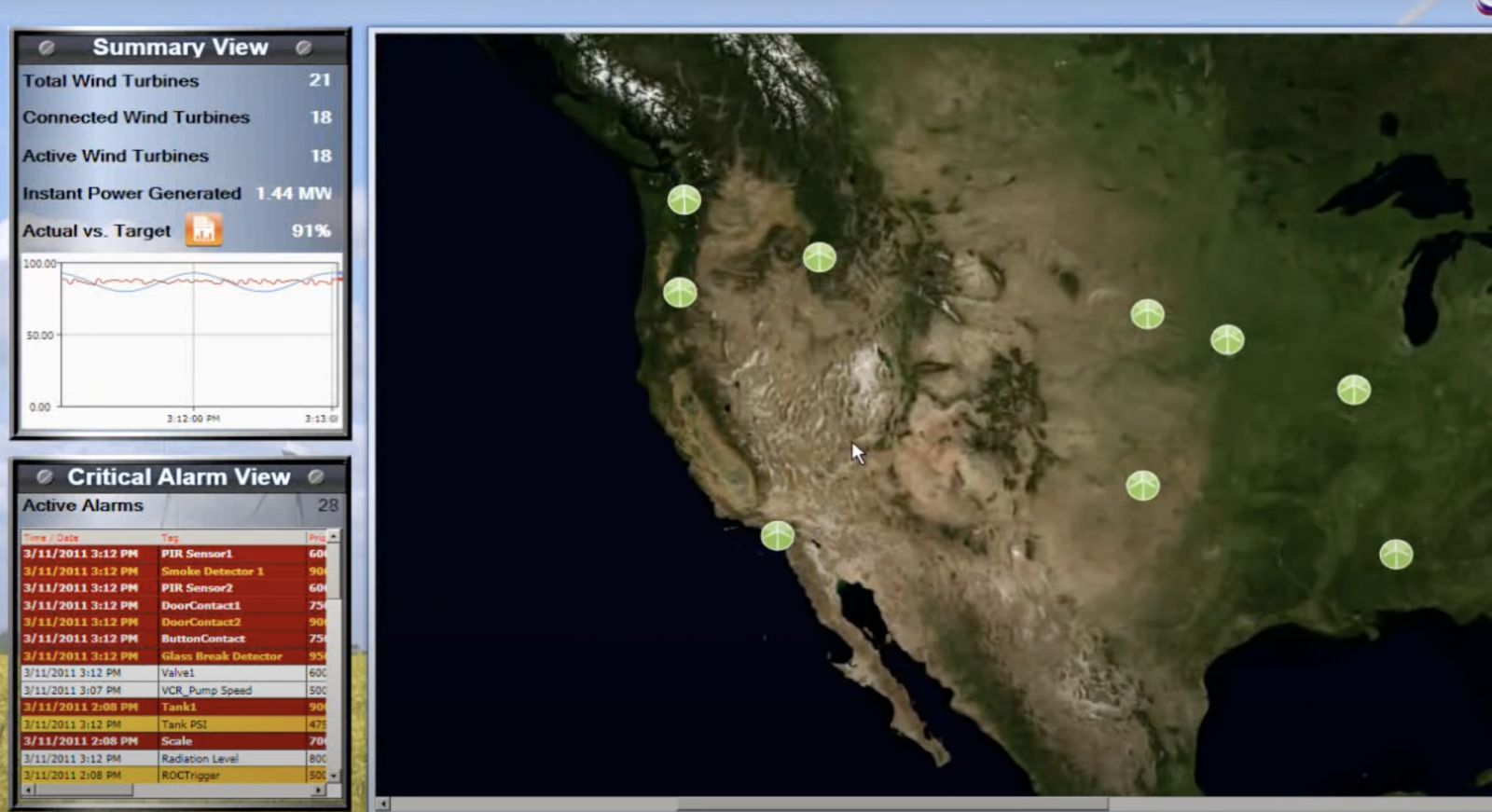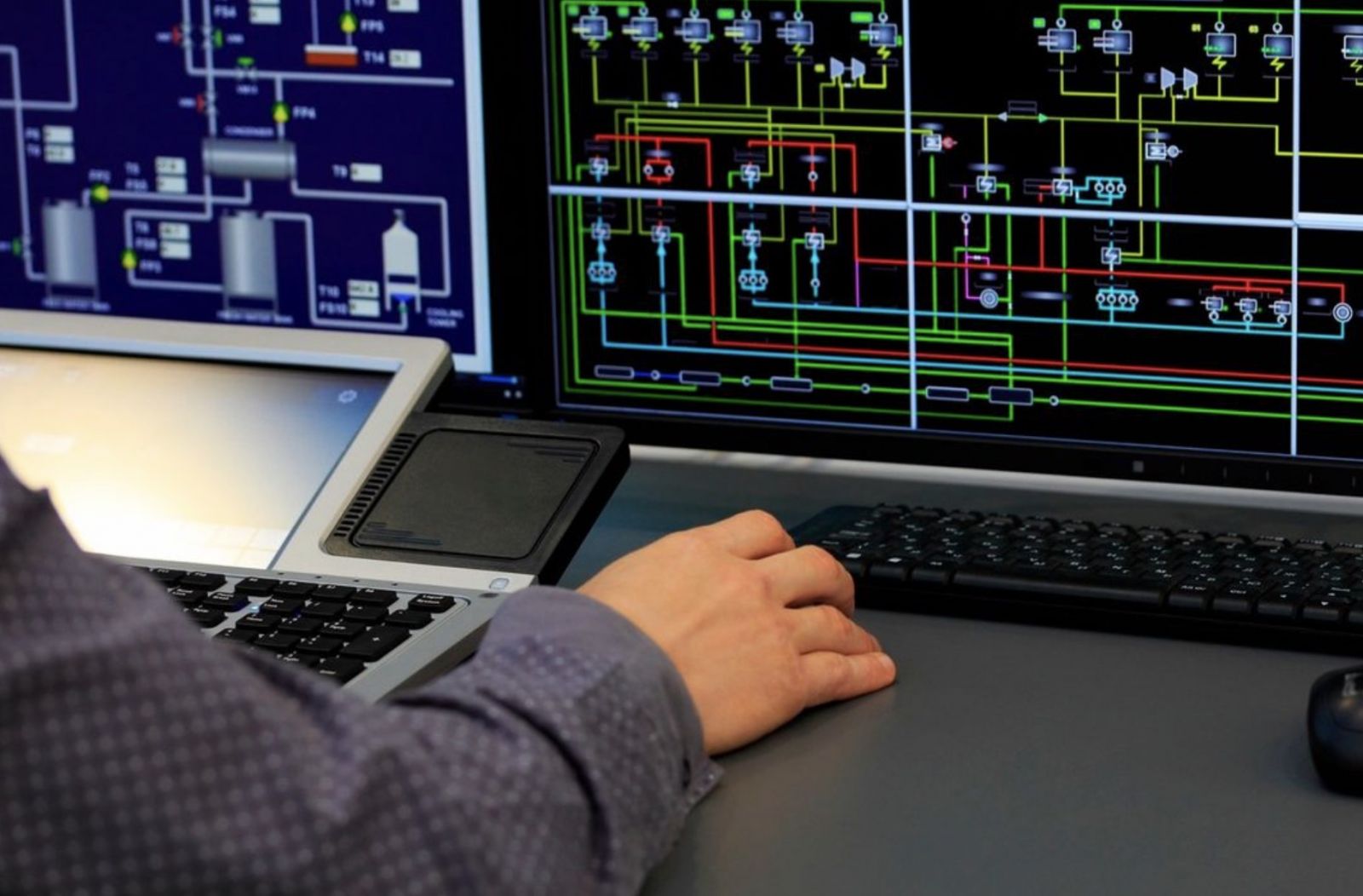Addressing the SCADA Skills Gaps for Renewable Energy
Renewable energy technologies, especially onshore wind, solar, battery storage - and recently allowed offshore wind - are gaining momentum without precedent. This seemingly unbridled growth is directly attributable to the enthusiasm for cutting system costs, deepening understanding of combining energy sources, and renewable energy's role in overall sustainability. Capturing the full value of these goals will require technological advancements and the skills to harness their maximum potential.
Because of its flexibility and scalability, supervisory control and data acquisition (SCADA) has solidified its place as a necessity; it is the most widely used automation system for renewable energy. SCADA is software for monitoring and controlling system equipment over a network in remote locations. It gathers and processes real-time data from operations; it interacts directly with process equipment through a human-machine interface (HMI); it stores process values and events locally, and; it can forward that data for consolidation and use in reporting and analysis. Its capabilities range from simple configurations like small residential solar, to large and complex installations of multiple plants or networks across a geographically dispersed area.

The convergence of information technology (IT) and SCADA operations technology (OT) has made SCADA an even more integrated part of overall renewable energy operations. Technology drivers such as industrial Ethernet networks, wireless mobile applications, and wireless networks for plants are tying SCADA to other business systems, including performance software, electronic work instructions, geographical information systems, asset management, computerized maintenance management systems, standard operating procedures, and hydraulic modeling software. SCADA systems are also aligning with standard networking technologies, with Ethernet and TCP/ IP-based protocols replacing older proprietary standards. Increasingly, a de facto standard OPC server (OPC UA in particular) is being packaged with SCADA platform software.
SCADA systems can regulate the individual wind turbines and solar inverters with commands to pause, stop, and start, and control different components within each technology. However, its real prowess is in delivering overall site control and providing stability to the grid. Grid frequency needs to stay as close to 60.00Hz as possible. SCADA controls the power output to regulate the frequency, using a control loop to measure at or as close to the interconnection substation as possible, adjusting power output to change the frequency until it is within the 60Hz deadband range. Voltage is controlled in a similar manner, using reactive power or adjusting the tap changer on the transformer to meet required voltage for that substation.
Renewable power plants are often the target of curtailments due to their ability to respond quickly and efficiently. Whereas traditional nuclear, coal or other power plants are slow to ramp power up and down, sometimes taking up to six hours to go to full production, renewable sites can be brought to full production or reduced to zero within a few minutes, depending on regional requirements for starting and stopping and the generating unit's ability to respond.

SCADA Skills
One of the biggest threats to the renewable energy industry is falling behind competitively, which can happen if the workforce doesn't possess the skills in emerging automation technologies.
SCADA engineers require a combination of skills in numerous disciplines. They need proficiency in major SCADA applications, system components and architecture, as well as remote sensing and actuation, and communication techniques to effectively monitor and control very large industrial processes. It is also important to have knowledge of proprietary and / or industry specific systems. Whereas power generation requires electrical and mechanical knowledge, renewables require specific knowledge around that industry, and for a substation requires understanding of breakers and line protection.
Also of importance is knowledge of local, state, and federal regulations, which include ISOs, TSOs, balancing authorities, and NERC and FERC regulations. IT and network skills are required for the systems to communicate seamlessly with one another. Cybersecurity knowledge is also needed to protect those systems. It is advantageous for SCADA operators to have knowledge of fiber, radio, and LTE for the devices to transmit data and remote access, and a vast knowledge of multiple types of PLCs, RTUs, sensors, SCADA software, HMIs, data concentrators, relays, and other mechanical devices to accomplish the tasks at hand.
Although there are companies and professional organizations that offer SCADA training programs with certifications, many are not thorough enough to become a master SCADA engineer.
 In-House or Outsource
In-House or Outsource
Renewable energy organizations typically require SCADA engineers to have a bachelor's degree in a related field, although a master's degree may be preferred. They also like their candidates to have at least five years of relevant experience to enhance their exemplary computer and communication skills. They choose new hires with one or two major skillsets and then provide on the job training to round out skills and knowledge. It's a slow, formidable process.
In addressing the burgeoning skills gap and lack of qualified talent, many renewable companies are leveraging third-party SCADA/IT staff augmentation and/or moving to third-party control rooms. They are reliable options for renewable energy companies looking for cost savings that leverage SCADA and control room expertise in an enterprise-level infrastructure.
There are several boutique, specialized renewables SCADA and IT service organizations with experience supporting some of the largest global renewables projects. These service organizations can be utilized to meet or accelerate project timelines, and fill in any technical skills gaps without the hassle of staffing an internal team to meet resource demand spikes. Once a project is commissioned, these resources can be shifted off the payroll or kept on for routine maintenance and support. Given the industry's rush to meet renewables demand, it is important for any contract resource to be fully vetted for expertise and a successful project track record.
Similar vetting is required for control room services. All third-party control rooms might look similar on the surface, but there are several significant and intricate factors that should be considered when searching for the ideal host, many of which can have a major impact on overall cost and operational performance. The ideal third-party control room candidate must achieve a myriad of requirements and designations, many of which are necessitated by the significance of the industry but also by the severity of incident-causing oversights. Handing over the responsibility of control room management means the third-party candidate must be prepared to succeed in every realm of control room operations.
Due to the variable nature of daily operations, control room personnel must understand procedures that are unique to particular operations, as well as industry-wide best practices and compliance requirements. The need for experience does not stop at the console, however; ideal candidates for outsourcing control room operations provide expertise across the board when it comes to control room services, including experience with SCADA systems, IT infrastructure, and other supporting systems, to cover all aspects of the interconnectedness of control room operations. This experience must cast a wide net encompassing industry knowledge as well to ensure that the candidate is not only experienced in the industry's past but invested in learning and preparing for the industry's technological future.
Experience with normal operations is the baseline for running a console, but the necessity of advanced experience comes with atypical operating conditions that require an immediate diagnosis, irregular operations that threaten the safety of a high-consequence area, and disaster response when unforeseen weather wreaks havoc to a system. Experienced controllers are trained to address anomalies.
Conclusion
Third-party control rooms meet the overwhelming costs and skills gaps of internal control room operations head on. They are a competitive option for organizations of all sizes, acting as well-oiled machines to tackle any situation that can occur in daily operations. The "right" control room can provide advanced industry experience in management and controllers, enterprise-level and highly-available infrastructure to support the technological demand, regulatory compliance experience in interpreting and applying regulations, and comprehensive disaster recovery planning to prepare for any potential scenario that could cause downtime. By considering these four aspects of control room operations, the renewable energy industry can more confidently determine which third-party control room providers are best suited to not only manage their operations but do it safely.
Woodrow Boles, Jr. currently serves as the Director of Renewables SCADA for EverLine, a fully-integrated compliance, SCADA/IT, control room and security services company. In his current role, he is responsible for all interactions with companies that have current renewable assets or plan to add renewables to their portfolio, leading their SCADA integration into one of the largest, fully NERC compliant 3rd party control centers.
Woodrow Boles has a Bachelor of Science in Computer Engineering from the University of Nevada, Reno, and has over 13 years of Renewable Energy industry experience, working with some of the largest owners of Wind, Solar, and Battery systems in the world. He started in the Renewable industry by erecting wind turbines, moved into the maintenance of wind turbines and major component swap out, and settled in the engineering and design of SCADA systems. He has integrated nearly 10 GWs of Renewable Energy, working with OEMs, Owners, Offtakers, Substation and 3rd party subcontractors, across most of the ISO regions of North America.
EverLine | www.everlineus.com
Author: Woodrow Boles
Volume: 2022 January/February








